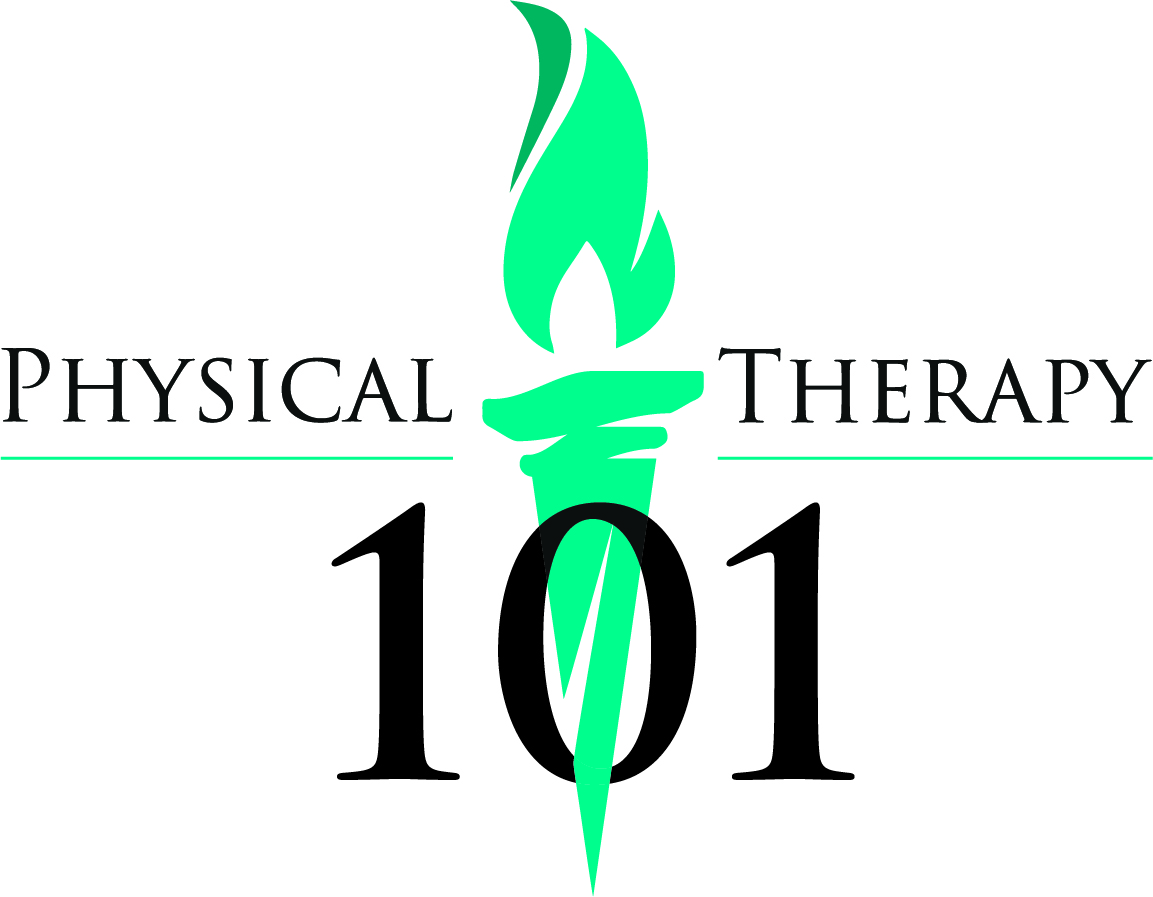Background
The Plantar Fascia is a ligament that runs from the heel (Calcaneus) to the ball of the foot (specifically the Metatarsophalangeal Joints of each toe). The primary function of the Plantar Fascia is to support the Medial Longitudinal Arch of the foot.
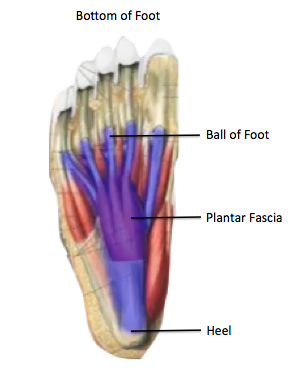
Plantar Fasciitis occurs when there is chronic inflammation leading to tendinopathy at the insertion of the Plantar Fascia onto the heel/Calcaneus bone. Plantar Fasciitis is typically characterized by heel pain that occurs during the first steps in the morning or after a period of resting. It is a fairly common condition, 1 million people in the United States seek medical treatment each year. It affects both sexes and can occur in recreational and elite athletes. Personal risk factors for Plantar Fasciitis include anatomic abnormalities, degenerative changes, and obesity. Activity risk factors include overuse, incorrect training, and suboptimal footwear. Plantar Fasciitis can be treated effectively via stretching program and/or providing inserts in the shoes.
More Information:
Stretching Exercises to Treat Plantar Fasciitis Show the Best Long Term Results
Recommended Products
Treatment
Plantar Fasciitis can be treated a number of different ways ranging from medication, physical therapy, and surgical intervention. According to a recent systematic review, specific stretching exercises for the treatment of Plantar Fasciitis produced the best statistically significant long term results.
It is a good idea to warm up before you stretch. Plantar fasciitis stretches should be done several times a day, with an emphasis on doing them the first thing in the morning.
Start by flexing and extending the toes 10-20 times.
Toe Flexion
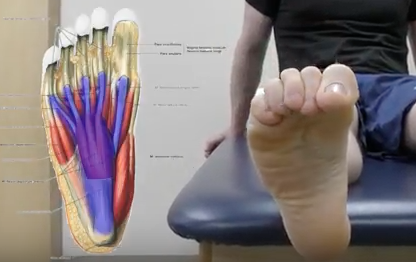
Toe Extension
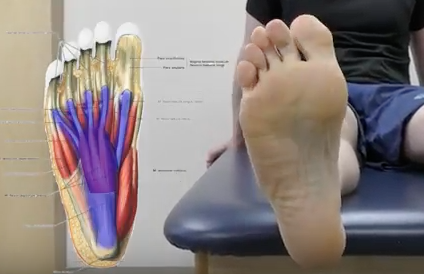
Then flex and extend the ankle in a pumping action 10-20 times. When you are pointing the foot forward this is known as plantar flexion, when you are pointing the foot back towards you this is known as dorsiflexion.
Dorsiflexion
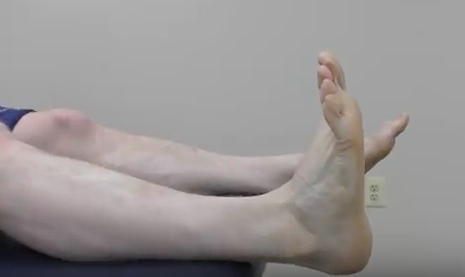
Plantarflexion
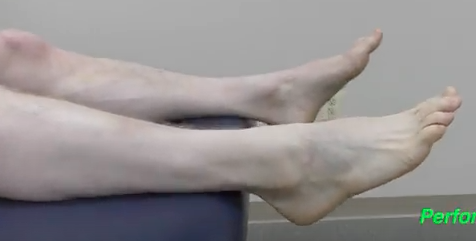
Massaging the plantar fascia should be done next. Roll back and forth on a small ball or another rolling object. Apply as much pressure as you would like. Do this for 2-3 minutes.
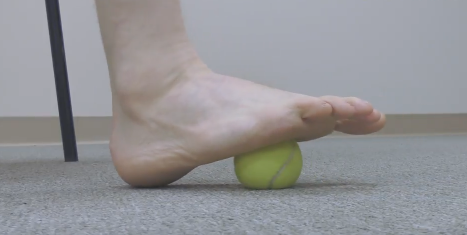
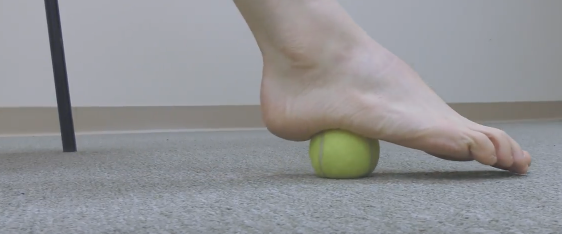
Next is your stretching series …….All stretches in this series should be done 3-4 times and held for 10-15 seconds.
Start by extending your toes. Prop your involved foot on your knee, grasp all toes with one hand and hold the heel with the other. Pull your toes back. Remember the motion should come at your toes, not our ankle joint.
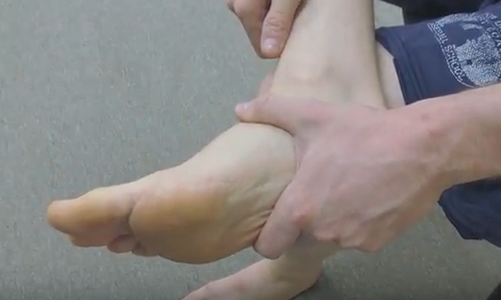
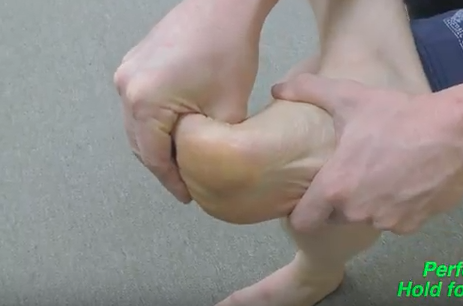
Another way to perform your toe extension stretch is to use a wall. Push your foot down on the wall allowing your toes to extend back.
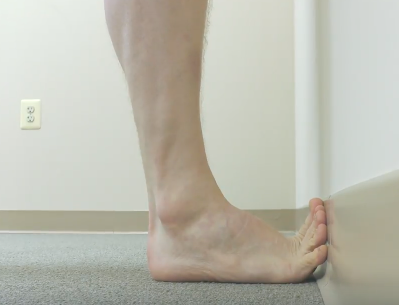
An advanced way to do this stretch is to use the end of the running surface of a treadmill. Again, push your foot down and allow your toes to roll into extension. Remember to make sure the treadmill is not running!
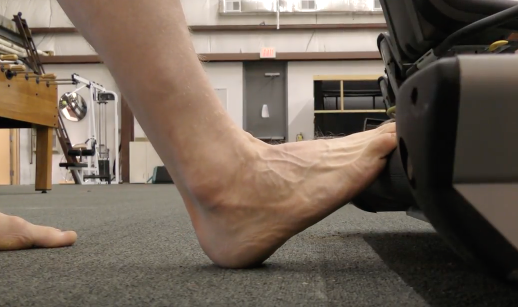
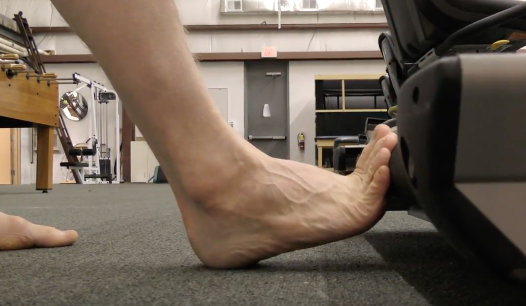
Runner's stretch should be done with the involved side knee fully extended then bent. Put your hands flat on the wall and drop your involved foot back. It is key to keep your heel down. DO NOT let it come up. Shift your hips towards the wall. You should feel this stretch in the top part of your calf and/or behind your knee. This is stretching a muscle known as the Gastrocnemius.
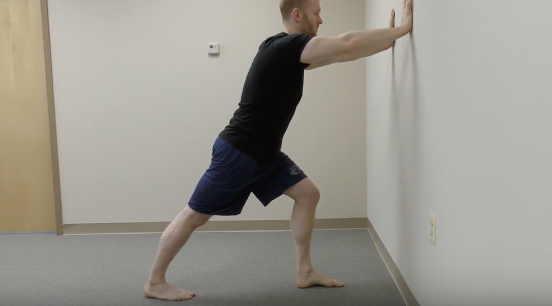
Next bring the involved foot slightly closer to the wall and bend the knee. Again make sure to keep your heel down. Once in position, drop your backside down towards your heel. You should feel this stretch in your mid and lower calf. This is stretching a muscle known as the Soleus.
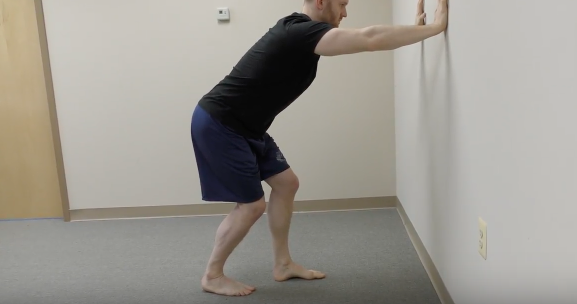
Stair stretches are next. Again you will do these stretches with both the knee fully extended then bent. Start with the involved foot on the steps with your heel hanging off. Fully extend your knee and drop your heel down in order to stretch the Gastrocnemius muscle. Shift your weight down through your involved foot to feel the stretch.
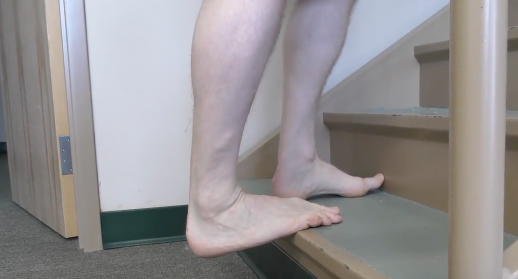
Next, do the same motion, but bend your knee in order to stretch the Soleus muscle.
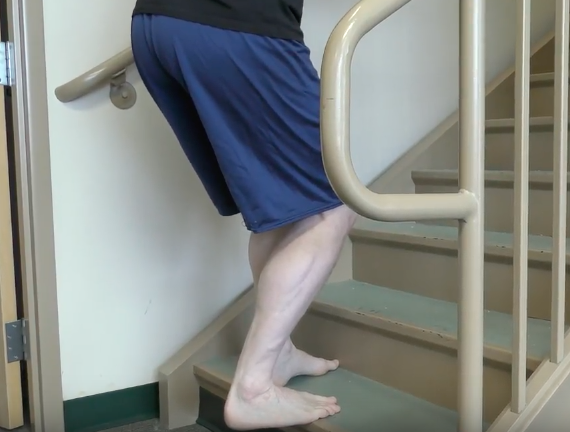
Always end with some form of ice. Take a frozen water bottle and perform a rolling massage for 2-3 minutes.
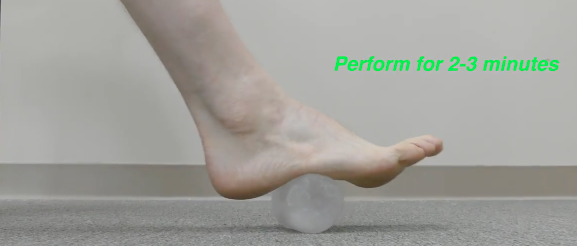
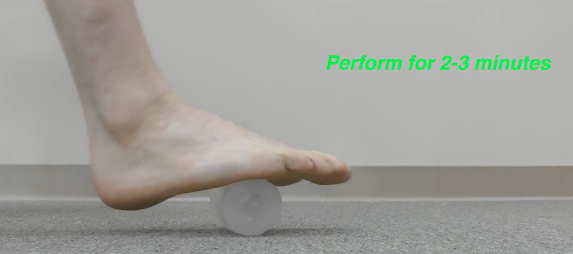
References
Lehnert, Bruce, and Jeffrey M Carrel. Heel Pain. Heel Pain, The Staywell Company, 2009.
Petraglia F, Ramazzina I, Costantino C. Plantar fasciitis in athletes: diagnostic and treatment strategies. A systematic review. Muscles, Ligaments and Tendons Journal. 2017;7(1):107-118. doi:10.11138/mltj/2017.7.1.107.
Schwartz EN, Su J. Plantar fasciitis: a concise review. Perm J. 2014;18(1):e105–107.
